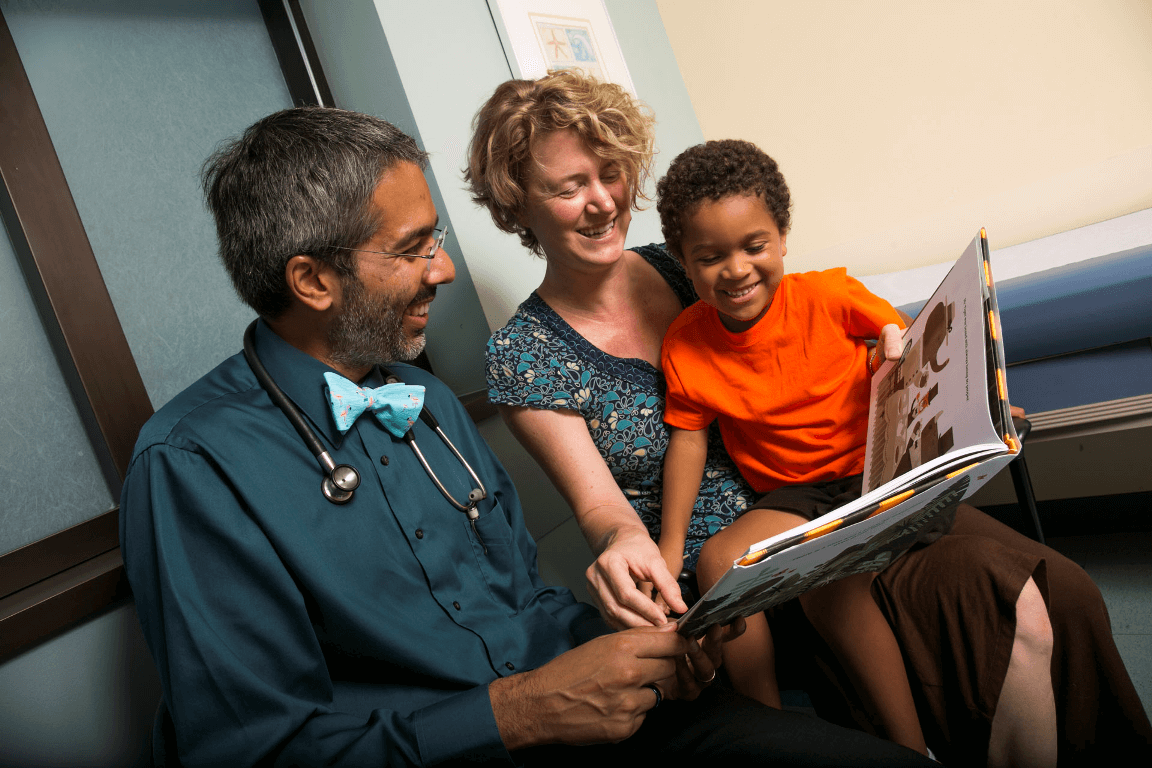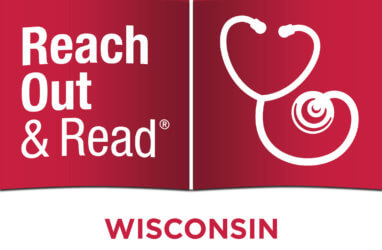A book drive is a great way to collect new and high-quality, gently-used books for a Reach Out and Read program. It also is a wonderful way to bring a community or organization together for a purposeful goal. The books collected will end up in the hands of eager children who participate in Reach Out and Read at a local clinic.
I am a UW-Madison student and founder of a student organization that works with Reach Out and Read Wisconsin. Below is information about our recent UW-Madison campus-wide book drive event – why we hosted it, who was involved and what we did to organize and promote the drive.

Posters made for the campus book drive
Background
As an eight-year volunteer for Reach Out and Read programs in the Milwaukee area, I was ecstatic to continue my early literacy promotion work as a UW-Madison student. In early 2017, I started a campus chapter for Reach Out and Read Wisconsin, called Badgers Reach Out and Read. It is made up of undergraduate and graduate students who work together to help the Reach Out and Read Wisconsin through volunteering, fundraising and helping to collect literacy materials.
November 3 through December 8, 2017, our organization hosted a campus-wide book drive on Reach Out and Read Wisconsin’s behalf. The UW-Madison campus gave us a large platform in hopes of many donations.

A Badgers Reach Out and Read book drive planning meeting
How Badgers Reach Out and Read organized and promoted the drive
Five building locations with attractive and visible signage
A key part of our book drive included finding campus drop-off locations for the donated books. We wanted to find donation spots that were well-known and in high-traffic areas. This way, not only would donors easily find a place to drop off their books, but prospective donors walking through a collection-site building would see the signage and be encouraged to participate.
The donation spots for our book drive included five campus buildings: Bascom Hall, Union South, the School of Business, Teacher Education Building and the Speech and Hearing Clinic (Goodnight Hall).

Social media image used to advertise the five drop-off locations
Permission to use these buildings as drop-off locations was obtained through email and in-person communications with respective building supervisors – all of whom were extremely helpful.
After talking with the building supervisors, it was discovered that not only did these buildings receive a lot of traffic from students, staff and the public but four of the buildings represented separate departments. These departments each had student organizations we could partner with for the book drive.
The UW-Madison campus spans about 936 acres. Geographically dispersed donation sites were strategically chosen as a way to bring the large campus together. Having involvement from multiple student organizations also allowed us to have more control over the collection of donated books, as no single student organization could be in all places at once.
For the buildings that did not already have donation bins for us to use, we purchased heavy-duty gray bins. We then hung signs about the book drive over the bins to increase their visibility.
Five Student Organizations
To create a book drive that engaged campus-wide participation, enlisting the help of other student organizations and crossing academic majors and interests accomplished our goal of reaching a wider audience.
The four student organizations we partnered with included the Aspiring Educators organization, Institute of Management Accountants (IMA), Phi Sigma Pi Service Fraternity and the National Student Speech Language Hearing Association (NSSLHA). These organizations combined a mix of literacy-based and service-based organizations.
These organizations promoted the book drive to their members through email, at bi-weekly meetings and hosting service events. During these service events, members could go “thrifting” together for gently used books or sort through books that that had already been gathered.
Many posters, emails, social media posts, shares, tagging, etc.!
Badgers Reach Out and Read members had fun creating beautiful posters to advertise the book drive.
Getting the word out about the book drive was key to the drive being a success. For us, this included sending out general book drive information and a map of donation spots in bi-weekly emails to our 200 student-member database. We encouraged our partnering student organizations to do the same.
We were grateful that many of the building supervisors also included information about the drive in emails to their building staff. This was especially important as many staff have children of their own or have access to children’s books more often than some college students would. The word even got out to local community organizations, and we were grateful for the books donated by The Neighborhood House Community Center of Madison.

Email messages promoting the books drive included attractive and informational attachments.

A campus map clearly showed book donation locations
We used our Badgers Reach Out and Read Facebook page to announce and post updates about the book drive. Chapter officers had fun posing with books and donation bins, creating Boomerang videos showing donation bins filled with books and tagging and thanking members or groups who donated. Our aim was to engage people, hold interest in the drive and get the word out to as many people as possible during the month-long donation period.
We also created a Facebook event through which we could invite others to participate. This was helpful as our officers and members could invite individuals from all different circles.
We made sure to post more advertisements before and during UW-Madison’s Thanksgiving break. For students, this was a prime time when they could go back home to search for books or receive book donations from their home communities (people learned of the event through the Facebook event). For Madison staff and the general public, this was also a time when the business of work and school wound down enough to search for books to donate. A lot of books were donated after Thanksgiving break, and we are thankful for these donations.
The book drive collected 6,155 new and high-quality, gently-used books
On December 8, Badgers Reach Out and Read officers finished collecting and sorting the donated books. To sort the books we followed the Reach Out and Read Wisconsin book guidelines.
A total of 6,155 children’s books were then packed into boxes and transported to the Interstate Books4School, which had graciously offered to store our books for Reach Out and Read Wisconsin. These books included many wonderful gently-used children’s books, as well as new books.
Many donations were of infant-level reading materials, but we also received reading materials that spanned up to age 12. Books for older children can be displayed for reading use in clinic waiting rooms and given to older siblings.
We are so grateful to all of the wonderful donations we received. This book drive would not have been such a success without the continual support from Madison community, students and staff – and of course, Reach Out and Read Wisconsin!
We hope that our journey can help others hold a book drive in their community for a local Reach Out and Read clinic. Here’s to more book drives in the future and to getting more books into the hands of more children in need!

Badger Reach Out and Read officers Kelly (left) unload boxes of books collected through the campus book drive













